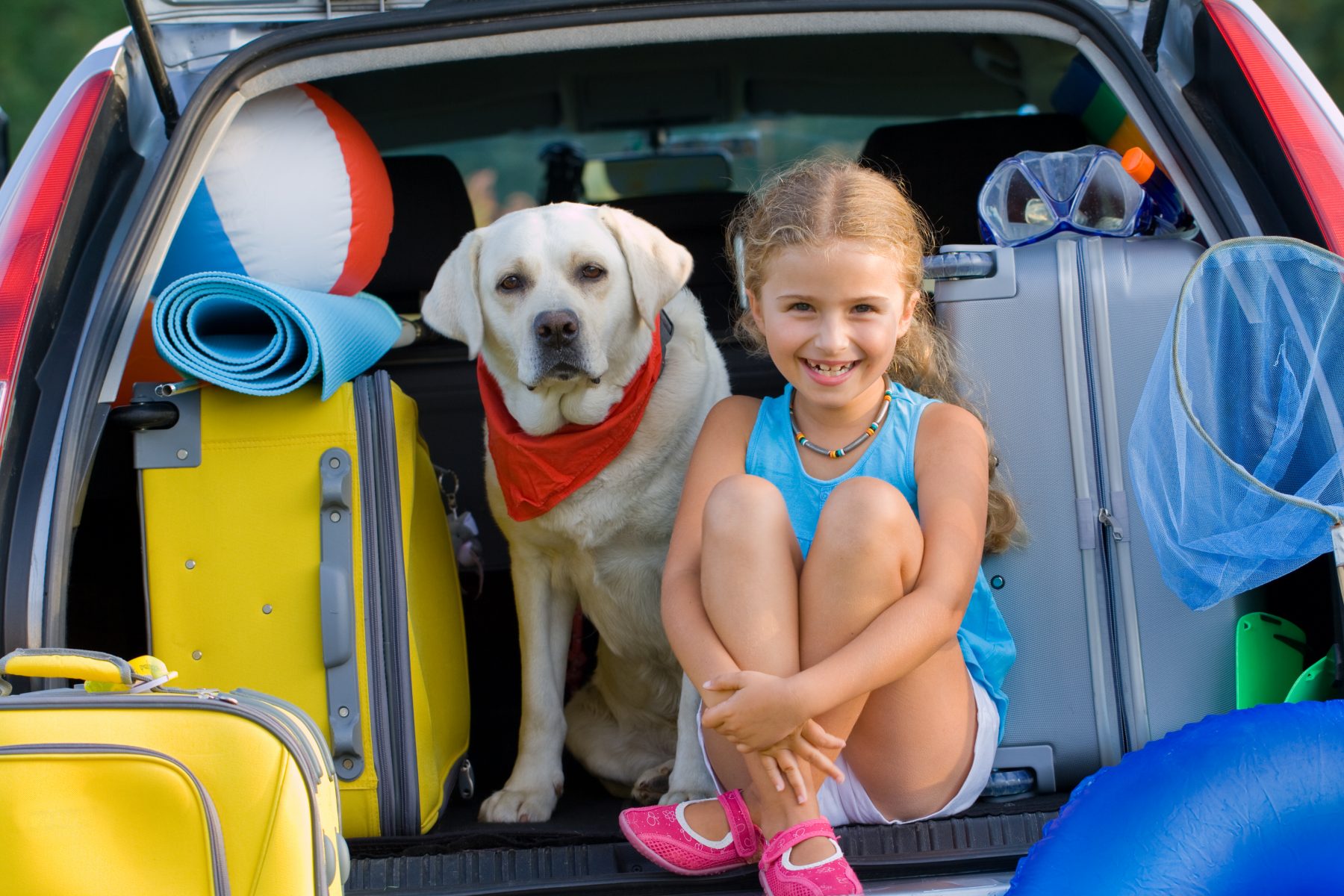Dog Car Safety: What’s the Best Way to Travel with a Dog in the Car?
Do you have a furry companion that you like to bring with you when you travel? Dogs can make excellent travel companions, especially for outdoor excursions like hiking or camping.
Whether you’re planning a short day trip or a multi-day excursion, it’s always better if you can bring your dog along for the road trip, rather than leaving them at home or with a pet sitter. However, if you are planning on embarking on a long drive with a dog in Ontario, it’s important to prepare for the journey.
Travelling with dogs in cars — especially over long distances — can be challenging for both the pet and the owner. Dog car safety is very important. You don’t want your dog to get overheated, dehydrated, or have an ‘accident’ in your car. That’s why it’s important to ensure that your dog is in good health beforehand and that you take their needs into consideration for the trip.
Here are some tips on the best way to travel with a dog in the car. We hope that this advice will help ensure that your dog stays safe and happy during your car journey!
Get a Checkup Before You Leave
Before heading out on a long road trip, you should make sure that your dog has a checkup with your veterinarian. This will ensure that your pet is up-to-date with all of their vaccinations and that they’re prepared for any flea, tick, or heartworm risks on the road.
Your vet will also be able to help you with car sickness, diarrhea, and restlessness remedies if these are a concern. Also, if you don’t have your pet microchipped, getting them chipped before a major road trip is a great idea too!
Prepare Your Dog for the Long Drive
If your dog isn’t used to long periods of time in a car, you should consider getting them accustomed to it before embarking on a major road trip. In the weeks leading up to your departure, take your pet on a series of drives, lengthening the time of each trip. This will help them get used to being in the car for a longer durations.
If you often travel with your dog, invest in rubberized floor mats and waterproof seat covers. Not only will this protect your car from damage, but it will also provide extra comfort for those long hours on the road.
Plan Your Route in Advance
Embarking on a dog-friendly road trip is all about proper planning. You’ll want to consider in advance how often you’ll need to stop to allow your pet out to walk around, do their business, and get some fresh air. You will also want to ensure that your dog has enough space to turn around and stretch out comfortably.
You should plan stops every couple of hours on the trip, depending on the needs of your particular breed of dog. You know your pet best and you’ll quickly get a sense of how often they need to use the bathroom and move around.
Every time you stop, you should pour some fresh water into a bowl and give them a few minutes to drink and rehydrate. You should also take them for a quick 15 to 30 minute walk to ensure they can get rid of some pent-up energy.
Bring a Pet Travel Kit
Even with proper planning, it’s not enough to jump in the car with your dog and hit the road — they require a lot of stuff when you take them on a trip. Make sure you put together a travel safety kit when taking your dog on a road trip, and consider including the following:
- Food, treats, and drinking water
- Food and water bowls
- A first aid kit, including tweezers, bandages, tape, gauze, and more
- Proof of vaccinations and health records (especially if camping at a campground or entering a national park)
- A leash and ID tags
- Photos of your pet, in case you become separated
- Paper towels and carpet cleaner for messes
- An old towel, in case of rain
- A pet bed or soft pet crate with blankets
- A toy or two — something to throw for larger dogs
- Any medications, vitamins, etc.
- Plastic bags
Optional Pet Safety Accessories
If you are particularly concerned about your dog’s safety in the car, then there are a number of optional accessories that you can consider. Whether you own a small or large dog, there are a number of options that can help ensure pet safety in the car.
If you have a smaller dog, consider a dog car safety harness or dog car safety belt. These options can help secure your pet in the case of an accident and prevent injury, similar to how a seat belt works for a human. Make sure that you look carefully at reviews when selecting a safety harness, as not all of these products are crash-tested or reliable.
If you have a larger dog, the best place for them to ride is usually the trunk of a larger car like a station wagon or SUV, where they have plenty of space to lie down, windows to look out, and you can keep an eye on them. If you’re traveling with a larger dog, you should consider a couple of different accessories, such as a safety net for the car boot or a soft safety crate for your dog to travel in.
Dog Car Safety | Frequently Asked Questions
Do you have other questions about how to safely travel with a dog in your car? We’ve compiled some of the most commonly asked questions about dog car safety. If you don’t see your question answered below, feel free to leave a comment asking us to address it.
Are you allowed to drive with a dog in your lap?
It is illegal to drive with your dog in your lap. The Ontario Highway Traffic Act considers driving with a dog in your lap as careless driving, which puts the driver, the occupants, and other drivers at risk of injury.
According to the Ontario Highway Traffic act, all animals in a car should be in the back, secured by a crate or a seatbelt harness. Pickup trucks driving with a dog loose in the back box can also be fined for having an insecure load. If a dog is in the back box of pickup, it should be in a crate that is secured to the truck bed.
Can you drive with a dog in the front seat?
Similar to driving with a dog in your lap, a dog of any size in the front seat is considered a case of careless driving under the Ontario Highway Traffic Act. You should never drive with a dog in the front seat. Dogs or other pets should be secured by a crate or a seatbelt harness in the back seat.
Can I leave my dog alone in the car?
You should never leave your dog alone in a parked vehicle in hot weather. On a hot day, even with the windows open, a parked car can become a furnace in a very short amount of time. Heatstroke and rapid dehydration can happen in minutes. If temperatures outside are hot, remember that the temperature inside a car can be 20 degrees hotter!
Should I let my dog hang his head out the window?
Many dogs enjoy hanging their heads out the window to get a breath of fresh air in the car. However, this practice can be much more dangerous than you might think. Things such as bugs, gravel, and birds can hurt your pet, even at lower speeds.
If you stop or brake suddenly, your pet is also at risk of falling out of the window, causing injury or even death in extreme circumstances. Even if your dog is properly secured in the back seat, we do not recommend letting your dog put his head out the window of a moving car. Cracking the windows is fine, but their head should stay inside!
Want more driving safety tips? Check out the Logel’s blog to learn how you can drive safely in every season.









